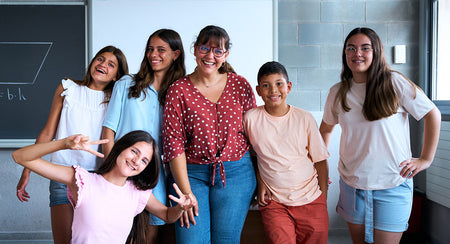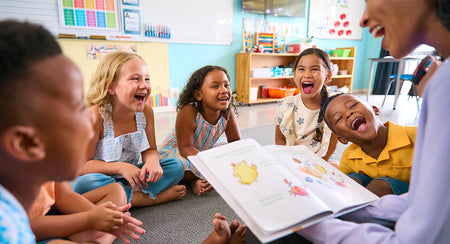Eight Strategies to Change the Behavior of Frequently Absent Students
It's no secret that student attendance in the aftermath of the pandemic is a bigger challenge than before. Obviously, there are many reasons why students might be absent more frequently. Yet, regardless of why students are absent, we want them to feel welcome and connected. We also want them to learn and succeed. When they do, their attendance is likely to improve.
On the other hand, if students feel disconnected, that their presence does not matter, or that they cannot succeed, the frequency of their absences is likely to increase. Unfortunately, unless we communicate our interest, find ways to help students feel they belong, and continue to invest in their learning, the situation is likely to become worse, not better.
Of course, frequently absent students are a challenge. They create more work for us. They typically struggle to keep up. And their absences can feel like rejection, lack of motivation, and absence of commitment. As a result, our relationship with frequently absent students can become strained and weakened. We can even feel resentful.
Still, we need to remember that we are dealing with children and adolescents. They may have developed poor habits. They may be facing life challenges and barriers of which we are not aware. They may doubt whether they can succeed or whether they are valued and accepted.
We may not be able to change students’ circumstances or control their behavior, but we can communicate that we care about them, the importance of their presence, and our confidence in and support for their success. When we do, we can have more influence on their behavior than we assume. Consider these strategies to assure frequently absent students that they belong, they are missed when they are absent, and we want them to succeed:
- Reinforce that their presence is noticed and valued. We can make it a priority to greet students warmly when they return and assure them that they were missed.
- Provide updates using inclusive language. Subtly remind students that they are part of the class. Rather than saying, “Here is what you missed,” we might say, “Here is what we are doing this week.”
- Resist drawing attention to absences in front of the class. Develop smooth reentry routines such as resource folders containing information to bring the student up to speed, brief check-ins, and quick group reviews of recent learning.
- Remain focused on moving forward. Casting blame and forcing guilt-laden conversations are not likely to make a positive difference in behavior. Concentrate on what can be done now and what’s next.
- Create some small wins. Look for opportunities to help students reengage and feel success. Search for what students already know and can build on. Modified tasks, manageable choices, or low-stakes activities can help students to build confidence and reconnect with learning.
- Look for opportunities for students to connect with peers. Pairing students with reliable, supportive classmates who share notes, provide updates, and offer encouragement can make a big difference. Inclusion in group projects and discussions that are not heavily dependent on previous class experiences can also help to initiate or reinvigorate social connections.
- Build connections beyond academics. Invitations to help with small classroom jobs and responsibilities can foster a sense of belonging. Noticing attendance streaks and improvement efforts can provide important reinforcement. Discussing personal interests and other out of school experiences can communicate caring beyond classroom behavior and experiences.
- Stay connected during absences. An email or quick call with a message that the student was missed and that we care can go a long way. “We missed you today” can help students to feel noticed. “I hope everything is okay” tells students we are interested in them.
Without question, frequently absent students can be frustrating and create more work. However, placing blame and harboring resentment accomplishes little. Our efforts are more likely to yield positive results when we focus on making our class a place where students feel noticed, valued, respected, and supported to do their best. When students feel welcomed and that they belong, our efforts to address attendance-related issues become much more productive.















